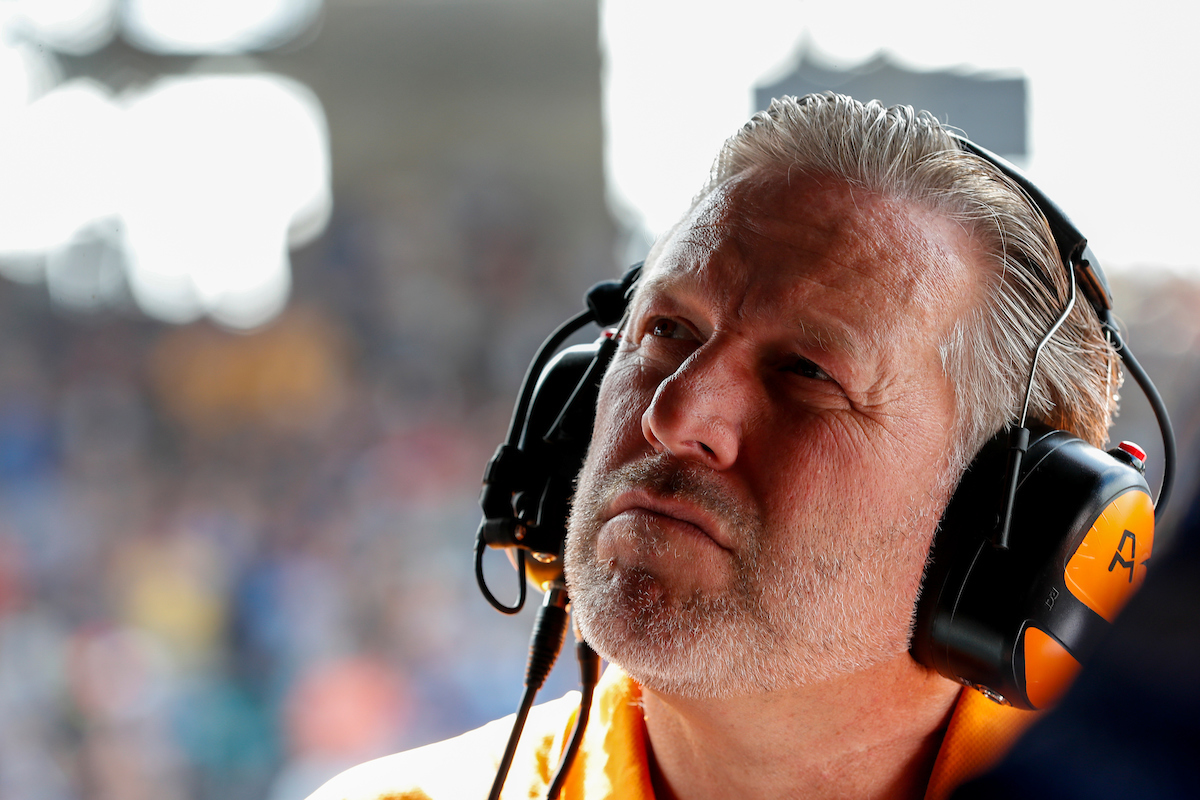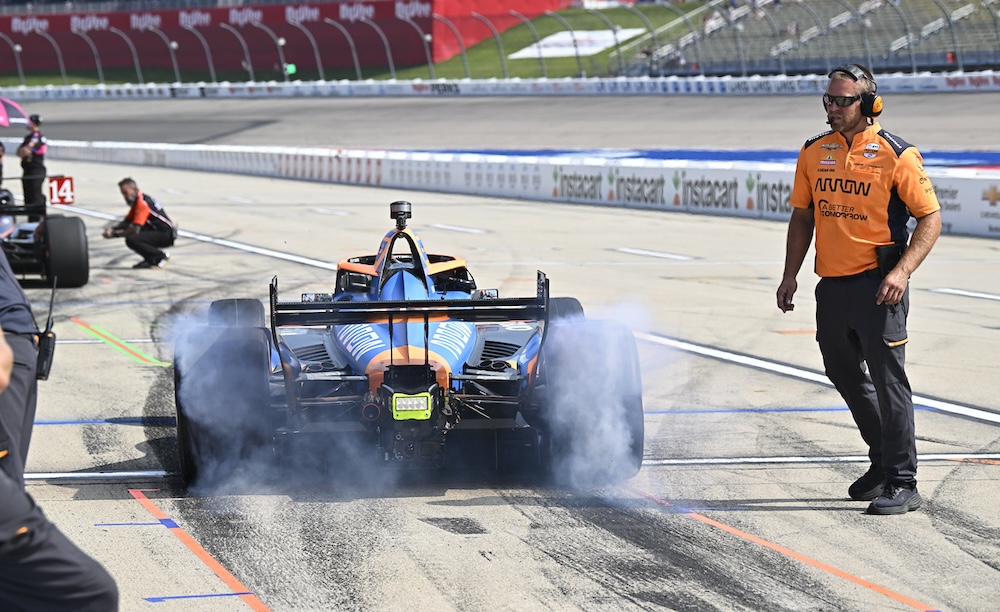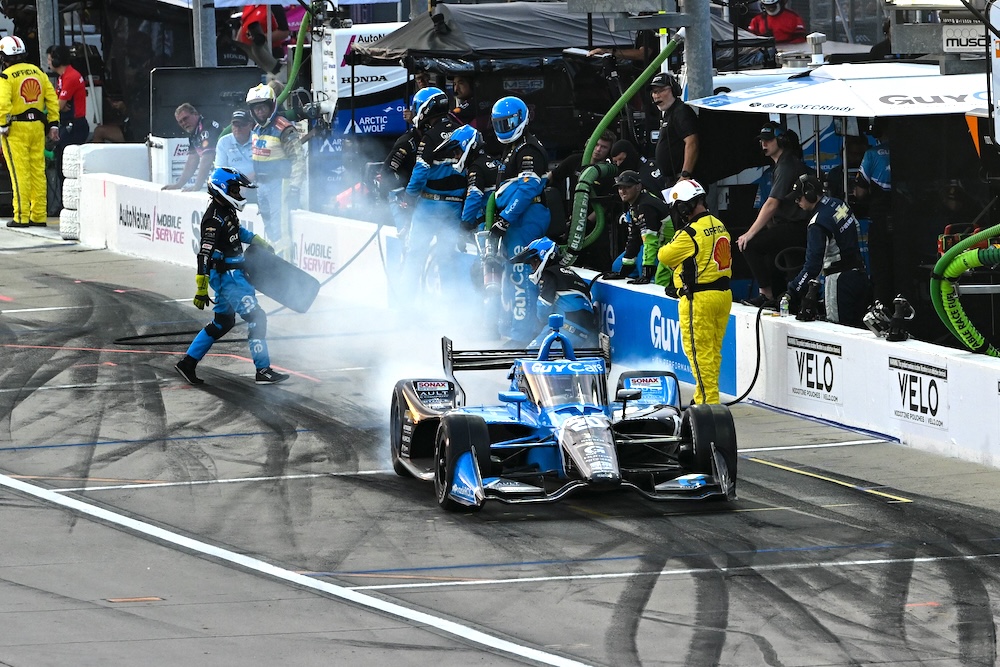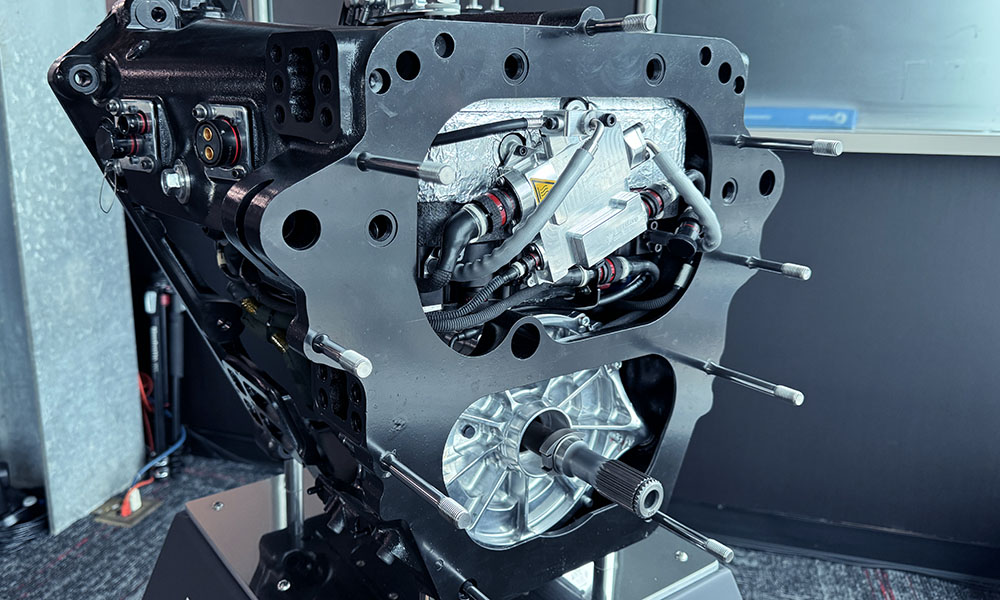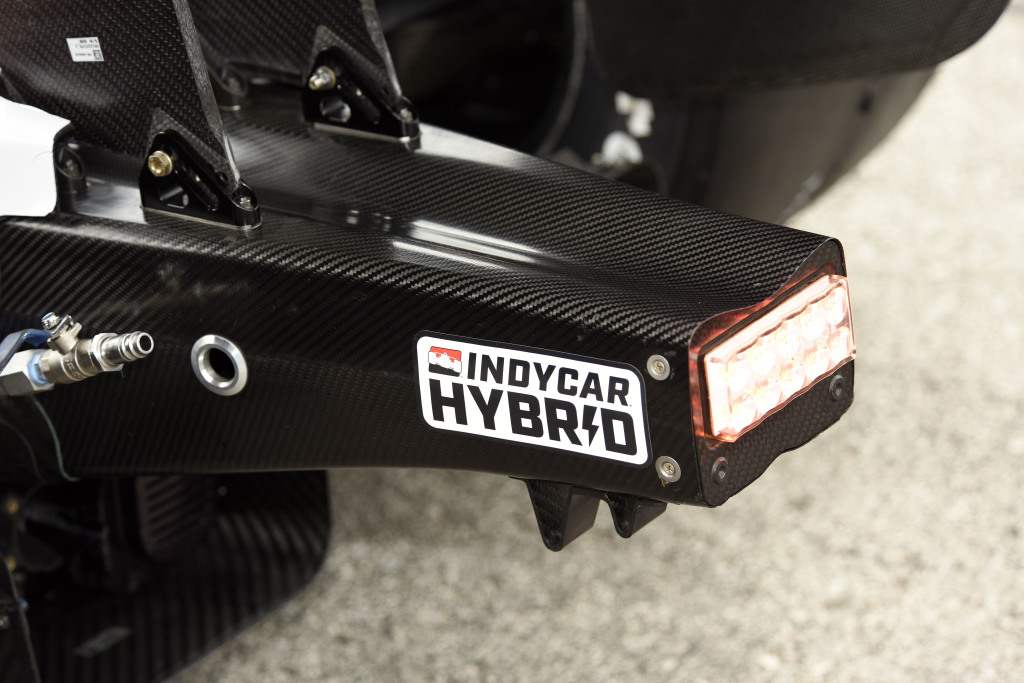In the morning, it was Santino Ferrucci atop the 11 drivers running at Friday’s Indianapolis Motor Speedway NTT IndyCar Series test, then it was Josef Newgarden who took the point, and in the end, it was Chip Ganassi Racing’s Alex Palou who went to the front after producing a 224.342mph lap in the No. 10 Honda to lead the field at the close of the day-long outing, the first for IndyCar’s new hybrid-spec powertrain at the 2.5-mile oval.
Newgarden was second in the No. 2 Team Penske Chevy (223.973mph), and a surprise in third—Dale Coyne Racing’s Rinus VeeKay, who agreed to test the car 24 hours prior—in the No. 18 Honda (223.383mph).
Graham Rahal was fourth in the No. 45 Rahal Letterman Lanigan Racing Honda (222.650mph), Marcus Ericsson was fifth in the No. 28 Andretti Global Honda (222.324mph), and Helio Castroneves was sixth in the No. 06 Meyer Shank Racing Honda (222.075mph).
Making his debut for Ed Carpenter Racing, Alexander Rossi was seventh in the No. 20 Chevy (220.504mph), ahead of Ferrucci in the No. 14 AJ Foyt Racing Chevy (220.149mph), Juncos Hollinger Racing’s Conor Daly in the No. 78 Chevy (219.997mph), Ryan Hunter-Reay in the No. 23 Dreyer & Reinbold Racing Chevy (219.955mph), and Arrow McLaren’s Christian Lundgaard, who was 11th and last in the No. 5 Chevy (219.566mph).
The energy recovery system, which adds 60hp on demand and a hike in weight with a 105-pound increase to the minimum weight of the Dallara DW12 chassis, was introduced at Mid-Ohio in July and made its long-awaited debut at the Speedway on Friday.
“It was good,” Palou told RACER. “It was a bit different with the hybrid. It was, in some areas, a little bit worse, obviously, just because of the weight. I think it’s a little bit tougher to get very close to the car in front. I’m not saying it’s impossible; like, you can overtake, but you can feel the car is a little bit heavier, and doesn’t love it when you lose some downforce.
“But on the same note, on the hybrid, it actually helps quite a lot. I think it made it quite fun to be in a group and to try and deploy in areas where you could see that they were not deploying, and then suddenly you get a big momentum and you can overtake. It’s testing. You never know if you have new tires and they have too-many-laps tires, and that’s why you feel super strong. So far, I think it was quite good.
[lawrence-auto-related count=3 category=1408]
“Actually, it was very fun. On the team side, we just went through some ideas to try and get more speed. We know that we struggled this year with speed, so we were just trying to get a bit more to see if we can fight for the race win next year.”
Drivers used the paddles on their steering wheels to harvest energy with the fast-charging supercapacitor-based ERS on the straights—usually while in a tow—to get the extra 60hp to deploy at the time of their choosing.
“In qualifying, I think it’ll be tricky to know what we should do if we recharge and deploy every lap, or maybe we don’t recharge and just deploy like a little each lap so we don’t lose too much speed,” Palou said. “I think it’ll be interesting and I think everybody’s thinking the same thing; I don’t think anybody knows what to do yet.
“[The race could be] very easy. When you get a draft, if you cannot overtake, you can just recharge a little bit and then hopefully use it on exit. But if you’re leading, it’s very tough to recharge. I would say you can lose one mile an hour on average at the end of the lap if you’re recharging and not deploying. It’ll be tough to be leading and recharging without getting overtaken, which I think will make it interesting. It’ll be actually fun.
“It’s not dangerous like I think some people at the beginning were a bit concerned of — on a superspeedway going at 230mph and recharging a little bit — [no impact on safety at all]. Honestly, it’s not a huge deal. We recharge a lot, then you can feel it, but it’s not crazy. It’s not like lifting the foot out of the throttle.”
IndyCar’s newest three-time champion, polesitter at the 2023 Indy 500, says he didn’t notice the mechanical drag caused by the ERS on the engine’s acceleration down the long straights either.
“Obviously it’s not helping, but as a driver, you don’t really feel that,” Palou added. “It’s also very tough to say, because you don’t know which engine maps everybody’s running. Nobody’s running qualifying maps like we do in May, right? So the speeds were not amazing today. I expect the speeds next year to be a bit lower, just because we’re carrying more weight.
“It won’t be anything that people will notice a lot, or we will notice. We don’t feel slow. It still feels really, really fast, so maybe we lose, I don’t know, 0.5mph average for us, but it’s really small. I was encouraged a lot by the test, to be honest.”
